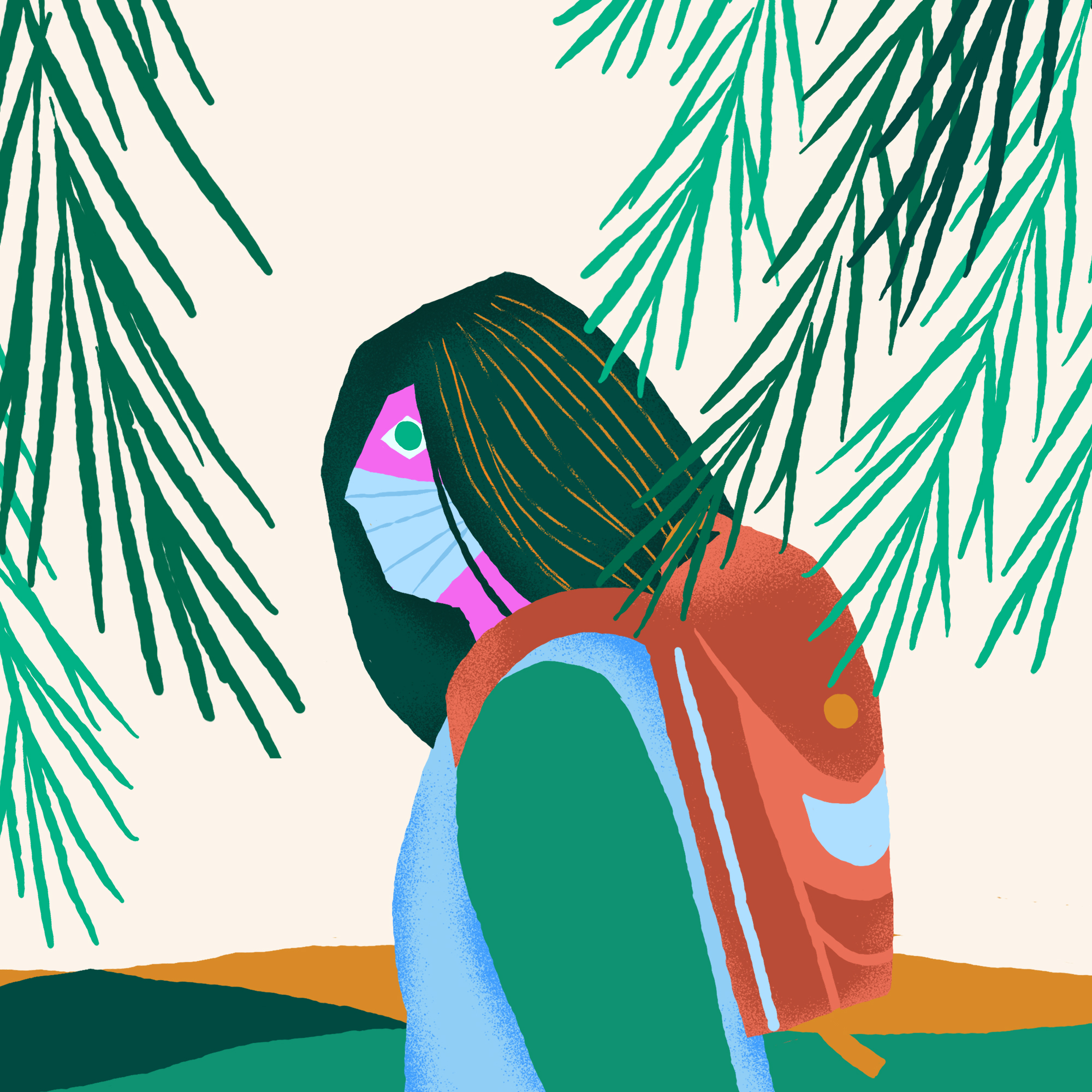How to camp like an infectious disease expert during COVID-19 How to camp like an infectious disease expert during COVID-19 How to camp like an infectious disease expert during COVID-19
We talked to a physician about how she stayed safe in the great outdoors.
Story by Catherine Arnold | Illustration by Marisol Ortega | August 14, 2020

Pining for pines outside town this summer? You’re not the only one. The outdoors “can have a significant role” in well-being, says Nandita Mani, a UW Fellow of Allergy and Infectious Diseases.
She spoke in a recent Crosscut article about camping during COVID-19 times. Studies back her up, such as this 2019 research on the benefits of at least 120 minutes a week out of doors. After working in medicine all spring and early summer, Mani, with a new title, Associate Medical Director for Infection Prevention and Control at UW and UWMC, carefully planned and set off around July 4 on a bike and hike overnight trip with her partner.
Mani talks here about camping, protecting ourselves during the pandemic, and safeguarding others in the areas we visit.
How was your trip over July 4?
Honestly, it was terrific to get outdoors and recharge. We drove to Mount Shasta in northern California, an area I’d never seen. We hiked through rocky, sandy terrain with wildflowers in the lower areas; snow covered much of the way to the top. Partway up, we spent a night camped on the mountain, then skied from the summit. That was pretty spectacular.
Then we drove a loop in Oregon that included Crater Lake National Park. Having brought bikes, we circled the lake rim. That was amazing. Then we drove to a campsite near Bend, Ore., and car-camped for two nights.
Bend and Crater Lake were return visits. For most of our trip, we were in places we’d visited in the past. Familiarity was helpful in our planning, given the uncertain pieces of putting together a trip during COVID.
Tell us about the precautions you took.
We prepared ahead of time, probably more than we would have normally for a camping trip, bringing our own food, plenty of hand sanitizer, and a variety of masks. During these times, it’s important to make sure you have everything you need, to avoid making frequent stops along the way to pick things up.
How did you isolate yourselves?
My partner and I chose not to mix with others or to go with a group. To minimize risk, it’s important to stick to your campsite and minimize contact with other groups—even though that might feel counterintuitive to what we’re used to doing.
To further minimize our time with others, we split time between backpacking and car camping. Before we left on our trip, we checked websites to find sites that frequently sanitized their restrooms. One of our camp locations shut down two restrooms in order to sanitize more frequently those that were open.
Did you go out of your way to find less-crowded campgrounds?
A lot of camping areas are crowded right now, but we selected a place that closed group campsites. While the campground was full, it had only smaller groups. I think probably that helped a bit, having only small groups.
How should we protect others in the places we visit?
I think we know physical distancing works, and there’s probably no better place to do that than in the outdoors. But it’s important that we keep distant even outside in bright sunlight. If you’re passing people on hikes on a narrow trail, keep a mask in your pocket or wear a breathable mask or gaiter continuously.
Why is getting outside worth it?
This was one of the first nature breaks I’d taken since those of us in the medical field started working long hours several months ago. Being outside can be so therapeutic. If we can do it thoughtfully and mindfully, all of us should celebrate that in the warm months.